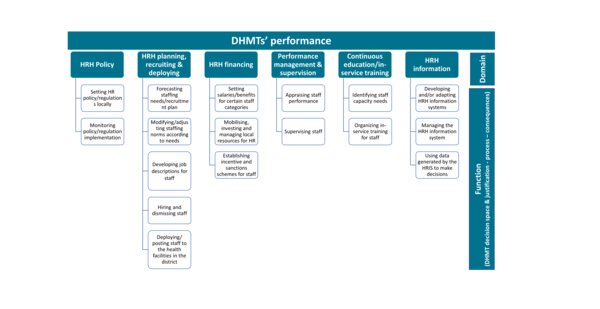New HRM paper from PERFORM2Scale
A new paper from the PERFORM2Scale teams - Management of human resources for health in health districts in Uganda: a decision space analysis - shines a light on the decision space experienced and used by district health managers in Uganda. Decentralisation has been adopted by many governments, including Uganda's, to strengthen their health systems. As part of that process decision-making power (also known as decision-space) is devolved to local governments, and the PERFORM2Scale team wanted to understand how DHMTs are using that power with regard to human resource management (HRM). Were they developing innovative ways of managing staff and improving health services within their districts? Were different districts responding to the challenge in different ways?
Wesam Mansour from Liverpool School of Tropical Medicine led on the paper and explains the process the team from Makerere University School of Public Health went through to gather data. "A self-assessment by DHMT members was conducted which assessed two dimensions of their decision space: perceived authority for HRM and reported use of decision space. The assessment was carried out in three Uganda districts - Bunyangabu, Ntoroko and Kabarole - at the start of the implementation of the first cycle of management strengthening intervention (MSI) in 2019 and at the end of the second MSI cycle 2021. Our paper is actually based on the DHMTs’ reported use of decision space in the first round in 2019."
Surprising variation
"As expected none of the DHMTs claimed to have full control over setting staff salaries and benefits, since these HR functions are decided at the central level. However, surprisingly, the DHMTs reported having full control over many other HR functions which means they have a wide decision space for much of their routine work in the district. However, our research found that aspects of the HRM decision space available to the DHMTs varied across the three districts, with Bunyangabu and Ntoroko DHMTs reporting having more control than Kabarole in areas such as HRH planning, recruitment and deployment."
Wesam explained that this knowledge may have implications for how districts operate in future. "Cross-district learning might be a good approach to use among districts, allowing them to exchange knowledge and experience where gaps appear in some of their HR functions. For example, Kabarole District was very different in the domain of HR information, with no control over managing HRH information systems or using data generated. It would be useful if the DHMT in Kabarole met with and learned from their peers in Bunyangabu and Ntotroko where the DHMTs showed full control over these functions. Examining decision space for HRM functions really can help identify areas where managers can change or improve their actions for the benefit of their districts."
